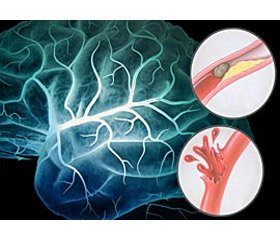Журнал «Медицина неотложных состояний» 1 (64) 2015
Вернуться к номеру
Influence of artificial therapeutic hypothermia on treatment results in patients with complicated intracranial aneurism hemorrhages
Авторы: Dudukina S.O., Kobelyatskyy Yu.Yu.
Рубрики: Медицина неотложных состояний
Разделы: Клинические исследования
Версия для печати
Scientific evidence of therapeutic hypothermia, as alternative methods of treatment and neuroprotection while secondary ischemia and intracranial hypertension are in progress, so, research to prove its effectiveness are in priority
Objective: to define artificial therapeutic hypothermia influence on surgery treatment results and to estimate survival rate in patients with complicated intracranial aneurism hemorrhages.
Materials and methods of research: 328 patients with intracranial aneurism hemorrhages were included in the research. 257 patients undertook intracranial operational treatment – clipping of arterial aneurism. In 31,7 % of patients progression of the disease in the post-operation period was complicated by secondary brain ischemia with intracranial hypertension development. Depending on the secondary brain ischemia treatment patients were divided into two groups. First group included 75 patients, who were treated traditionally. Therapeutic hypothermia for 48 hours as an alternative method of secondary brain ischemia with intracranial hypertension treatment was used in 29 patients who were included in the second study group. Hypothermia was used with the help of Blanketrol II following modified method Gal R. et al. To define connection between constraint forces (Glasgow Outcome Scale - therapeutic hypothermia) based on statistics c2 Kramer coefficient (k) was defined. To define the connection between therapeutic hypothermia usage and treatment results according to classification “good” – “bad” percentages of patients in the study groups were compared; odd ratio (OR) was calculated as well. To define therapeutic hypothermia effectiveness as for patients survival Kaplan-Meyer method was used. To define survival functions differences in different groups log-rank test and Gehan criteria were used.
Results of research: Therapeutic hypothermia usage to treat secondary brain ischemia was connected with the treatment results according to Glasgow Outcome Scale (к=0,411 (p=0,002). Comparing results of patient treatment in groups 1 and 2 according to the categories “good” and “bad” significant deviations weren’t defined OR = 2,036 95% acceptable range (AR) [0,691; 6,000]. But while detailed analysis according to Glasgow Outcome Scale it was defined that among those patients who died the percentage of those in whom Therapeutic hypothermia was used appeared to be significantly lower. In patients with Glasgow Outcome Scale = 3, it was higher. So, therapeutic hypothermia usage promotes the renewal of neurological functions and decrease in lethality. The percentage of patients with different treatment results in 6 months OR= 1,314 AR [0,479; 3,605] and 2,5 years OR= 0,354 AR [0,088; 1,43] in groups didn’t differ. While analyzing survival functions higher lethality rate among patients was defined in those patients who didn’t get therapeutic hypothermia. Survival curve in second group patients is superior to the curve of the ones from the first group. It proves that there is higher lethality level in the group where therapeutic hypothermia wasn’t used. From 5 to 74 months of observation curves were arranged parallely. Survival function wasn’t changed in patients in whom therapeutic hypothermia was used in the period while in the group where therapeutic hypothermia wasn’t used survival function reduction was observed for 22, 36 and 39 months of observation. At 74th month of observation survival curves and their odd ratio were crossed and then went parallel at the same level. While comparing survival functions in the study groups it was defined that therapeutic hypothermia usage promotes improvement in patients with intracranial aneurism hemorrhage complicated by secondary brain ischemia in the post-operational period.
Conclusions: in 31,7 % of patients progression of aneurism hemorrhage in the post-operational period are complicated by secondary brain ischemia with intracranial hypertension development. Usage of therapeutic hypothermia in patients with complicated intracranial aneurism hemorrhages promotes improvement of patients survival in patients with intracranial aneurism hemorrhage that were complicated by secondary brain ischemia in the post-operative period.

